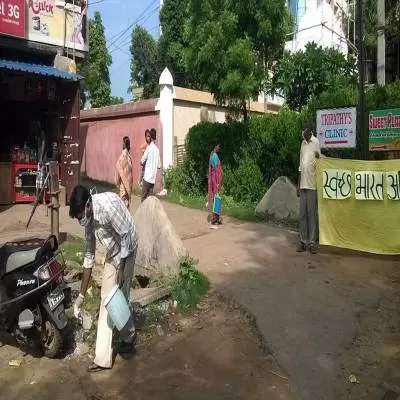
Mumbai, March 29 -- The National Scheme Sanctioning Committee (NSSC) convened its sixth meeting under Swachh Bharat Mission-Grameen (SBM-G) Phase II to review and approve the Annual Implementation Plans (AIPs) for 2025-26 from all States and Union Territories. The meeting, held in New Delhi, was chaired by Shri Ashok Kumar Meena, Secretary, Department of Drinking Water and Sanitation (DDWS), Ministry of Jal Shakti.
Recognising Progress and Setting Ambitious Goals Applauding the remarkable progress of SBM-G, the Secretary highlighted the achievement of 76% ODF Plus Model villages as of March 2025, attributing this success to the collective efforts of States, UTs, and partner ministries. He emphasised the crucial role of local communities, Self-Help Groups (SHGs), and State and District Water & Sanitation Missions in ensuring the mission's success.
He outlined three core principles for sanitation initiatives in 2025-26:
Decentralised Waste Management: Treat all solid and liquid waste as close to the source as possible. Integrated Approach: Focus on solid waste, liquid waste, faecal sludge management (FSM), and plastic waste, while ensuring sustained ODF status. Universal ODF Plus Model Villages: Achieve 100% ODF Plus Model villages by March 2025, leaving no village behind.
Strengthening Convergence and Implementation The Secretary stressed the need for close collaboration between SBM-G and the Jal Jeevan Mission (JJM) to integrate Water, Sanitation, and Hygiene (WASH) efforts, ensuring synergy between health and sanitation sectors. With over 50% of villages pending verification, he urged States and UTs to expedite the process in this final year of SBM-G Phase II.
Approval of the Annual Implementation Plan Shri Jitendra Srivastava, Joint Secretary and Mission Director, SBM-G, presented an overview of SBM-G Phase II achievements, alongside the physical and financial targets for 2025-26. Following deliberations, the Annual Implementation Plan (AIP) for all States and UTs was approved, reinforcing a collective commitment towards achieving a fully ODF Plus rural India by 2025-26.
Key Attendees The meeting was attended by:
Members of the NSSC, including senior officials from DDWS, Ministry of Panchayati Raj, and the Ministry of Housing and Urban Affairs. Additional Chief Secretaries/Principal Secretaries/Secretaries responsible for rural sanitation in States/UTs. Non-official members of NSSC, representing stakeholders from the sanitation and development sectors.
With a strong emphasis on community-driven sanitation, sustainable waste management, and inter-ministerial collaboration, SBM-G Phase II is set to achieve its ambitious target of 100% ODF Plus Model villages by 2025-26.
Published by HT Digital Content Services with permission from Construction World.
